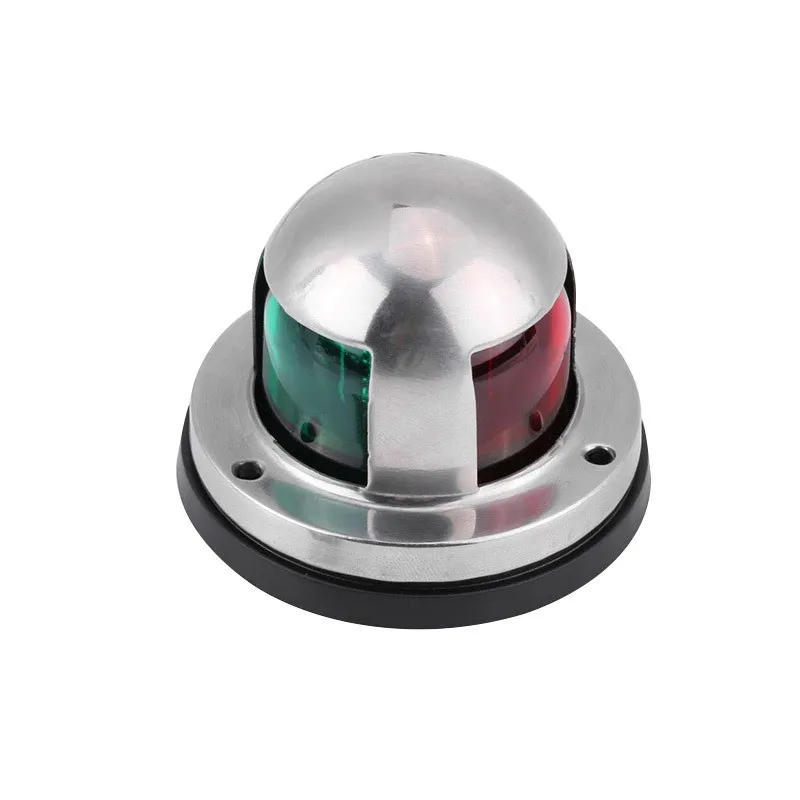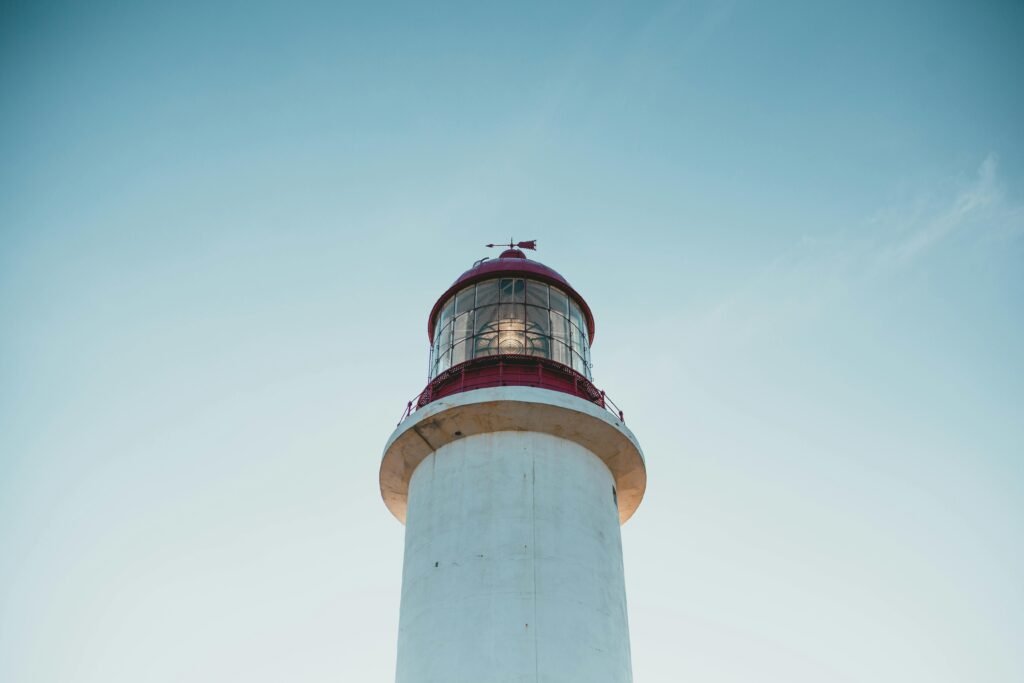LED marine explosion-proof lights are lighting equipment specially designed for use on ships and offshore platforms in environments with explosive gas or dust. This type of lamp not only has all the advantages of LED lamps, such as high luminous efficiency, energy saving, long life, etc., but also has excellent explosion-proof performance and can ensure lighting safety in extreme environments, so it plays a vital role in offshore operations.

Introduction to the importance of LED marine explosion-proof lights
- Safety: The most important thing is to improve the safety of the working area. In flammable and explosive environments, such as oil tanks, cargo holds, etc., explosion-proof lights can effectively prevent electrical equipment from becoming a source of ignition and reduce the risk of accidents.
- Reliability: LED marine explosion-proof lights are designed to withstand harsh marine environments, such as salt spray, moisture, temperature changes, etc., ensuring reliable operation under various conditions.
- Economical: Although the initial investment is high, the long life and low energy consumption of LED lamps enable them to greatly reduce energy and maintenance costs throughout their life cycle.
Why do we need to use explosion-proof lights in certain scenarios?
- Flammable and explosive environments: Ships and offshore platforms often handle or store flammable and explosive substances, such as oil and natural gas. In these areas, ordinary lighting equipment may cause explosions or fires due to electrical sparks or high temperatures.
- International and regional regulations: Most international and regional safety regulations require the use of certified explosion-proof lighting equipment in potentially explosive environments to ensure the safety of people and property.
- Environmental factors: The marine environment requires lighting equipment to withstand the influence of salt spray corrosion, moisture, wind and waves and other natural conditions. Explosion-proof lamps are usually designed to be more robust and durable to adapt to these requirements.
Basic characteristics of LED marine explosion-proof lights
| Feature | Description |
|---|---|
| Corrosion Resistance | Due to frequent exposure to seawater and humid environments on ships, LED marine explosion-proof lights are made with corrosion-resistant materials such as stainless steel or special alloys, and anti-corrosion coatings, ensuring long-term use without corrosion impact. |
| High Efficiency and Energy Saving | LED lights are known for their high luminous efficiency (more light output per watt of electricity) and low energy consumption, significantly reducing energy use compared to traditional lighting technologies, while providing sufficient illumination. |
| Longevity | LED lights typically have a lifespan of tens of thousands of hours, far exceeding traditional light sources. This reduces replacement frequency and lowers maintenance costs, especially important in hard-to-maintain areas such as ships. |
| Explosion-proof Performance | Designed to meet specific explosion-proof standards (such as ATEX or IECEx, etc.), they can be safely used in flammable and explosive gas or dust environments. Explosion-proof lights prevent the spread of internal explosions, protecting the surrounding environment. |
| Easy Installation and Maintenance | Despite their complex design to meet explosion-proof requirements, many LED marine explosion-proof lights are designed with user-friendliness in mind, ensuring easy installation and maintenance processes. |
| Environmental Adaptability | Capable of adapting to extreme temperature changes and harsh weather conditions, suitable for the complex and variable marine environment. |
| High Protection Level | Usually having a high IP (Ingress Protection) rating, strong dust and water resistance, ensuring normal operation in various harsh environments. |
| Instant On | Unlike traditional light sources that need warming up, LED lights can be turned on and restarted instantly, providing convenience for lighting in emergency situations. |

Application scenario analysis
Ship oil tanks and cargo holds:
- These areas may accumulate flammable gases or volatile liquid vapors and require explosion-proof lighting to prevent accidental ignition.
- LED marine explosion-proof lights provide necessary lighting to ensure operational safety while reducing the risk of fire or explosion caused by electrical equipment.
Deck and bridge:
- Work on deck is often carried out in bad weather and requires reliable and efficient lighting to ensure safe operation.
- As the command center of the ship, the ship bridge requires clear line of sight and high-quality lighting, and LED explosion-proof lights can meet these needs.
Lifesaving and Escape Equipment Area:
- In emergency situations, the lighting of life-saving equipment areas and escape passages is particularly important. LED marine explosion-proof lights can provide a stable and reliable light source to help personnel evacuate safely.
Mechanical room and control room:
- There are a large number of moving machinery and electrical equipment inside the mechanical room, which require good lighting for easy monitoring and maintenance.
- As the nerve center of ship operations, the control room requires high-quality lighting to reduce operator visual fatigue.
Special areas:
- For example, special ships such as liquefied natural gas (LNG) ships and chemical ships handle substances that are easily flammable and explosive, and have extremely high requirements for the explosion-proof performance of lighting equipment.
- Docks, loading and unloading areas and other offshore platforms are also application scenarios for LED marine explosion-proof lights. These places also have explosion risks and require explosion-proof lighting to ensure operational safety.
Technical parameters and selection guide
| Category | Importance | Selection Guide |
|---|---|---|
| Explosion-proof Classification and Certification | Ensures the light meets the explosion-proof performance requirements for specific environments. | Choose lights with appropriate certifications (e.g., ATEX in the EU, IECEx for international standards) based on the environment (gas or dust) and regional regulations. |
| Light Source Quality | Affects visual comfort and work efficiency. | Color temperature: Select based on application, e.g., work areas may need daylight-like color temperature for better accuracy. CRI: High CRI (>80) helps with better color recognition, suitable for environments requiring precision work. |
| Protection Level | Indicates the light’s resistance to dust and water, especially important for marine environments. | Choose lights with a high IP rating (e.g., IP66 or above) to ensure resistance against harsh weather and environmental conditions. |
| Luminous Efficiency and Power | Determines the energy efficiency and lighting effect. | Select lights with high luminous efficiency (lumens/watt) to improve energy efficiency while meeting the required lighting levels. |
| Lifespan and Reliability | Affects maintenance costs and the frequency of light replacement. | Choose lights offering a long lifespan (usually in hours) and good warranty. |
| Electrical Safety | Prevents safety issues caused by electrical faults. | Voltage: Ensure compatibility with the power supply system. Protection measures: Choose lights with safety features like overload and short-circuit protection. |
| Ease of Installation and Maintenance | Impacts installation costs and the effort required for maintenance. | Consider the method of installation, ease of integration with power and control systems, and simplicity of routine maintenance and part replacement. |
| Environmental Adaptability | Ensures the light performs reliably in specific environmental conditions. | Select lights suitable for extreme temperatures, humidity, salt mist, and other specific maritime environmental conditions. |

Installation and maintenance recommendations
Installation suggestions
- Read the instructions: Before installation, be sure to carefully read the installation instructions provided by the manufacturer to understand the specific requirements and installation steps of the light fixture.
- Check the certification mark: Make sure the light fixture’s explosion-proof rating and certification meet the requirements of the installation environment.
- Electrical Connections: Installation work should be performed by qualified electrical technicians to ensure that all electrical connections comply with local electrical safety standards and regulations.
- Protection level: Ensure that the installation location and method maintain the protection level of the luminaire, especially in environments with water and dust.
- Avoid mechanical damage: During the installation process, be careful not to cause mechanical damage to the light source and housing of the lamp.
- Proper positioning: Reasonably arrange the position of lamps according to lighting needs and site layout to ensure adequate and uniform lighting.
Maintenance recommendations
- Regular Inspections: Perform regular visual inspections of your fixtures to look for signs of damage, such as cracks, corrosion, or poor seals.
- Clean your fixtures: Clean your fixture’s housing and lens regularly to remove dust and dirt to maintain efficient light output. Use appropriate cleaning agents to avoid damaging the lamp’s protective coating.
- Check electrical performance: Check that cables and connections are tight and not worn or damaged. Ensure all electrical components are in good condition to prevent potential safety risks.
- Replacement parts: If some parts of the lamp (such as LED modules or drivers) are damaged, they should be replaced with original parts recommended by the manufacturer to maintain the performance and safety of the lamp.
- Record maintenance activities: Record all inspection, cleaning and replacement activities, which helps track the condition of your fixtures and predict future maintenance needs.
- Observe Safety Guidelines: Before performing any maintenance work, always disconnect power and follow all applicable safety regulations.
In conclusion
Employing these lights not only improves safety and operational efficiency, but also contributes to significant energy savings and lower maintenance costs over time. With their rugged design and advanced features, LED marine explosion-proof lights are ideally suited to meet the demanding requirements of the maritime industry, ensuring reliable, safe lighting in potentially explosive environments.
Going forward, it will be critical for maritime operations to continue investing in this type of technology to improve safety, efficiency and sustainability. The integration of LED marine explosion-proof lighting is another step towards achieving these goals, providing a brighter and safer future for the marine environment.

